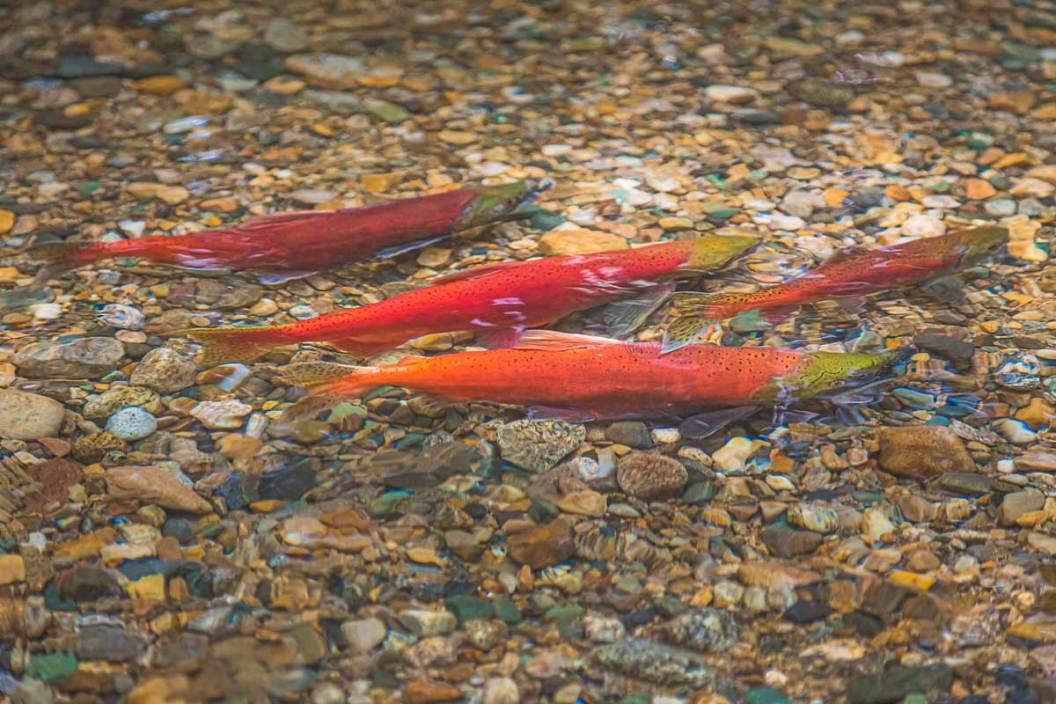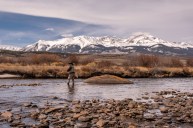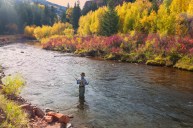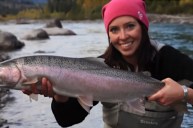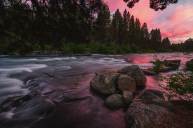Have you ever enjoyed a grilled salmon filet? What about perfectly smoked salmon served on a cracker, perhaps with a bit of cream cheese or brie? If so, it's likely that the salmon you savored wasn't a wild-caught fish that you hooked yourself. However, you don't have to go to the ocean to catch salmon worthy of the dinner table. In fact, you can catch kokanee salmon, a delectable species, in interior freshwater systems in the Western U.S.
Technically a land-locked sockeye salmon, kokanee are native to waters in the northwestern United States and British Columbia. They've also been introduced to reservoirs in Colorado, Montana, Utah, and even New York. Although kokanee salmon aren't native to Colorado, they've been living in Blue Mesa Reservoir since the 1960s. Additionally, even though they can't run into the ocean to breed like their close saltwater relatives, they still run to the places where they hatched. Colorado Parks and Wildlife (CPW) uses this life history feature to its advantage.
How Kokanee Are Managed in Colorado
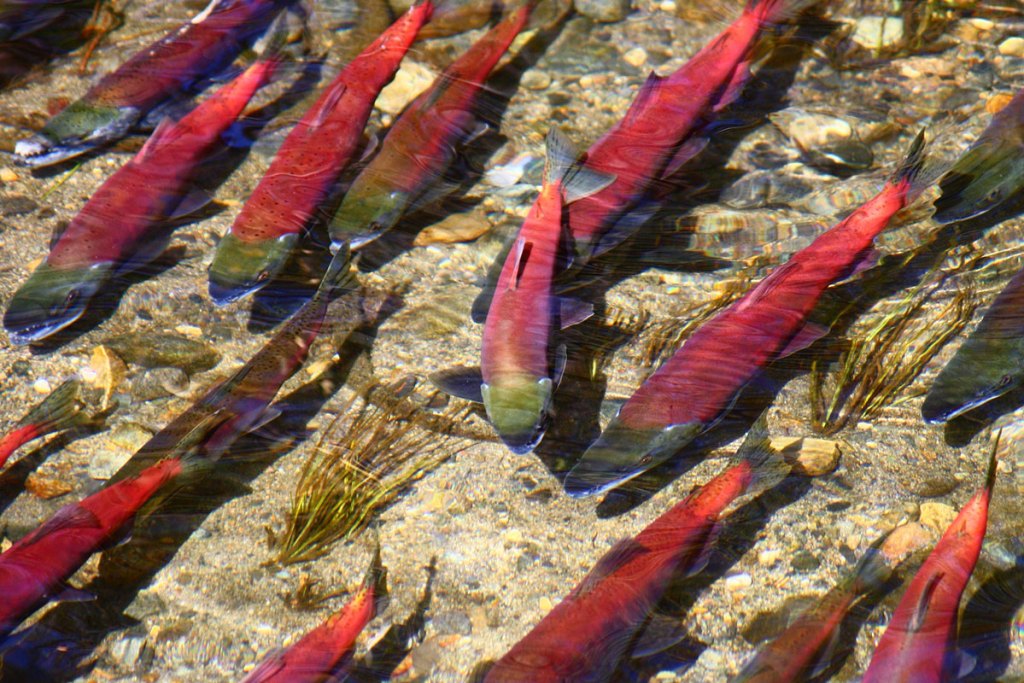
Since they're an introduced species in Colorado, kokanee are stocked in Blue Mesa each year by CPW. The local CPW fish hatchery, Roaring Judy, is located on the East River south of Crested Butte at over 8,000 feet of elevation. Here is where all hands-on forms of kokanee management take place; in fact, it's the home of the largest kokanee run in the U.S. The property features a fish hatchery, a rearing unit, employee housing, fishing ponds, and access to the East River. At Roaring Judy, they don't just raise fingerling and catchable salmon but also cutthroat and rainbow trout. The public is allowed to access the property, its ponds, streams, and neighboring wildlife area, making it a popular spot to cast a fly rod.
After they spend the winter at Roaring Judy, the salmon are released into the East River as fry and swim 30 miles south into Blue Mesa Reservoir via the Gunnison River. After spending about four years of their life in the reservoir, the kokanee become sexually mature. At that point kokanee salmon are ready to breed, and they migrate upstream toward their hatching grounds. After turning from metallic silver to a deep scarlet red, kokanee begin their 30-mile upstream swim back to Roaring Judy to spawn. This potentially-fatal northern migration back to their birthplace is called running.
After the kokanee spawn, they die. Their trip north can be so difficult, some of them perish along the way before they get a chance to reproduce. However, the ones that do make it all the way back to the fish hatchery will be milked, ensuring high rates of successful reproduction. CPW employees raise the fertilized eggs until they're ready to be released come spring.
During the salmon run, kokanees are extremely vulnerable. Their bright color makes them susceptible to predation from eagles, ospreys, foxes, humans, and more. Not only are they easier to see, but because they're dying, they're also incredibly weak. I've seen salmon running up the rivers with chunks of flesh missing from their bodies. I've seen others that look alright but act like zombies as they aimlessly float around a shallow pool. The fish are truly in breed mode; their digestive system can even completely shut down during this time. However, salmon are filter feeders. Their main source of food is zooplankton. Their large jaws host many sharp teeth because they can be aggressive biters if a large bug, minnow, or another salmon gets in their way. This means that spawning kokanees offer great fly fishing opportunities while they're running because they're easy to access and are more aggressive than usual.
How to Catch a Running Colorado Kokanee on a Fly Rod
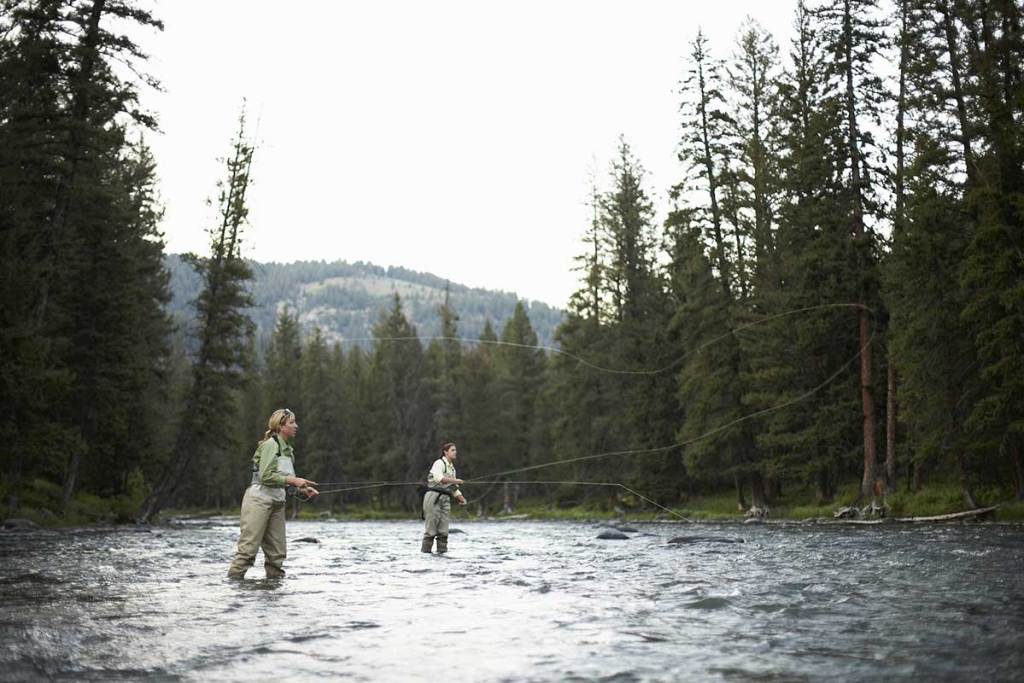
Stewart Sutton/Getty
I've spent plenty of time chasing kokanee in Colorado, and I've come up with a good collection of pointers that I can pass on. To catch kokanee on your fly rod, first identify where they are in the rivers and what they're doing there. You know they won't be in potential feeding locations because they're too focused on breeding to eat, so it's best to locate the deep holes where pods of fish are resting. Kokanees prefer to travel in small pods upstream for safety; they'll rest as a group, too. Spots with slow, cold water on the leeward side of rocks or other large structures are good resting places where anglers can target them.
Once you've identified where the fish are, try different setups until you find what's aggravating them the most. Remember that you'll need your rig to sink and drift as gently as possible; our goal is to essentially hit the salmon in the face with a naturally-drifting fly. A common fly fishing rod for salmon fishing during the run is a 6 WT 9' rod. You'll also want a tapered, 9-foot, 2x leader because those teeth are so dang sharp. Attractants are key here as we aspire to annoy a hormonal fish, so consider stocking up on brightly colored wet flies prior to hitting the water. Globugs, San Juan worms, and bright Copper Johns are a decent go-to. Personally, I favor a bladed chartreuse streamer; it's an aggressive thing to throw and kokanee love them. If you want to go for trout and salmon, you can add a drably colored nymph to the end of your attractant. Trout will bite the potential meal drifting downstream.
When You Can Keep Kokanee in Colorado
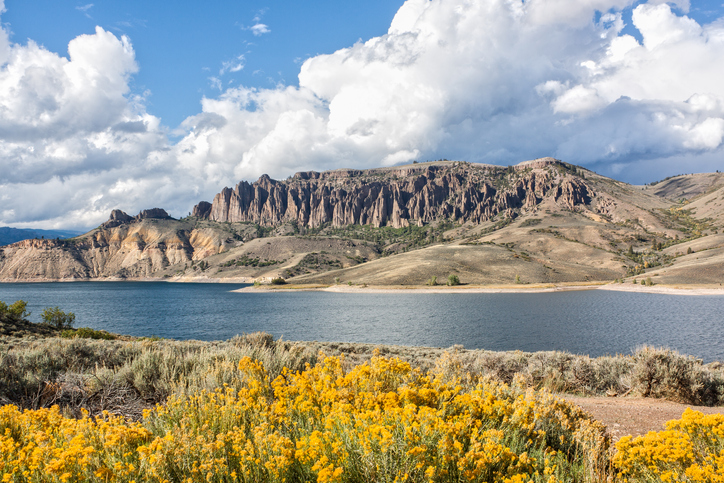
After you've dialed in your location and setup, try out a few fly options and see what they're hitting. If you manage to catch a few, consider keeping them for your smoker if it's during the salmon season.
Colorado has a specific salmon season, during which you can keep kokanee salmon if you catch them in a river. According to CPW's fishing brochure, anglers cannot keep salmon between August 1 and October 31 from the "confluence of the East and Taylor Rivers downstream to the standing water line at Blue Mesa Reservoir, including all tributary canals and diversions." Starting November 1, you can keep salmon caught in that stretch of river.
If it's after the first of November, I can't recommend enough keeping the salmon you catch, given they're not too far gone to save for dinner. Alternatively, CPW hosts spawned kokanee giveaways; you can learn more about them here. Kokanees are unforgettably delicious no matter how you cook them, whether it's on the smoker, grill, oven, stovetop, or campfire. They pair beautifully with both sweet and savory flavors; you're going to need to keep at least two to try them both ways.
